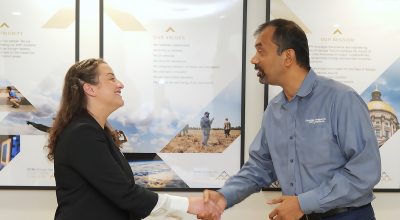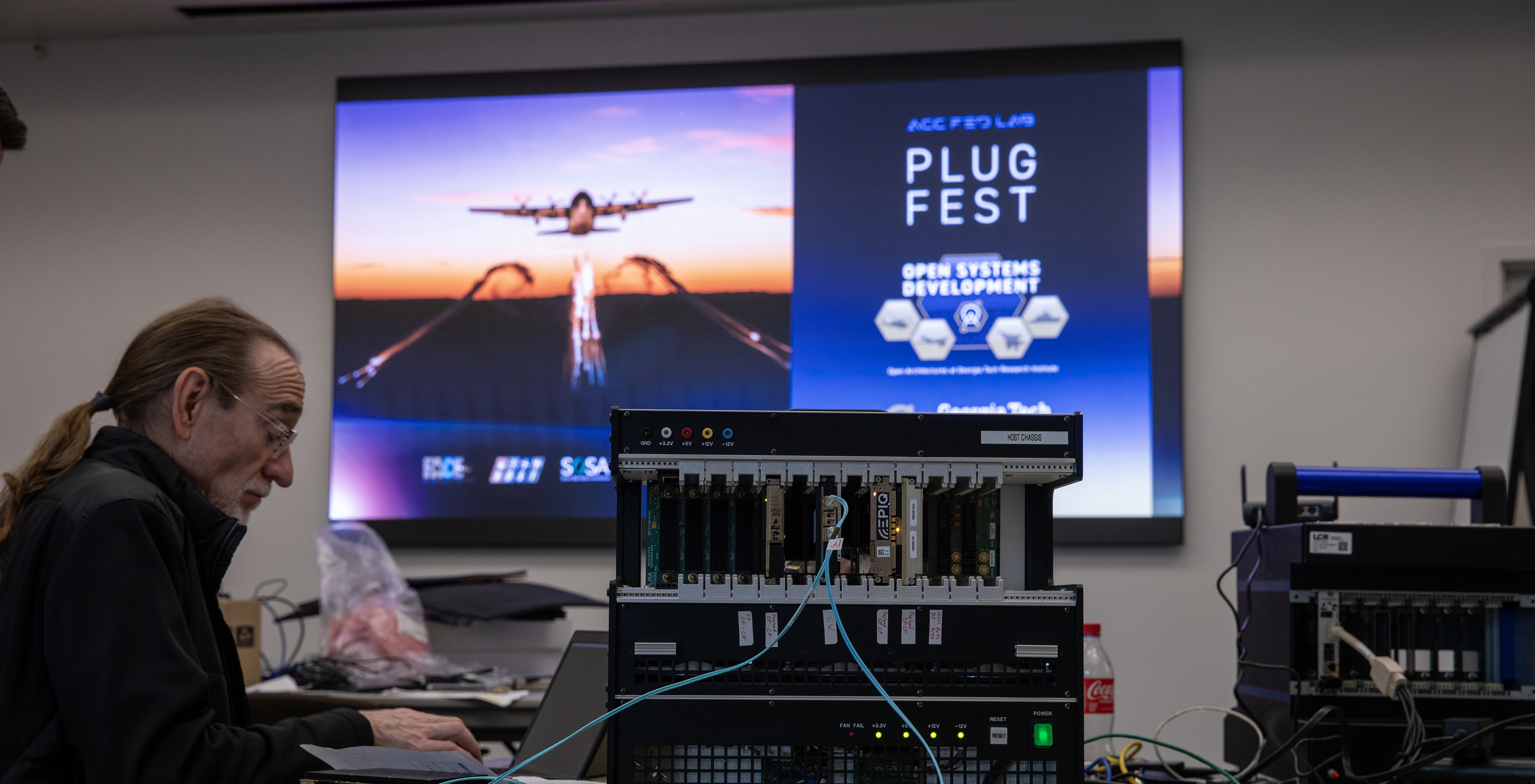
Representatives from nearly two dozen makers of open-architecture equipment for Department of Defense (DoD) sensing-related applications met in early December at the Georgia Tech Research Institute (GTRI) to demonstrate that their equipment meets objectives for the upcoming “SOSA™ and Aligned Open Architecture Standards PlugFest 2025,” to be held February 10th, 11th and 12th at Beale Air Force Base.
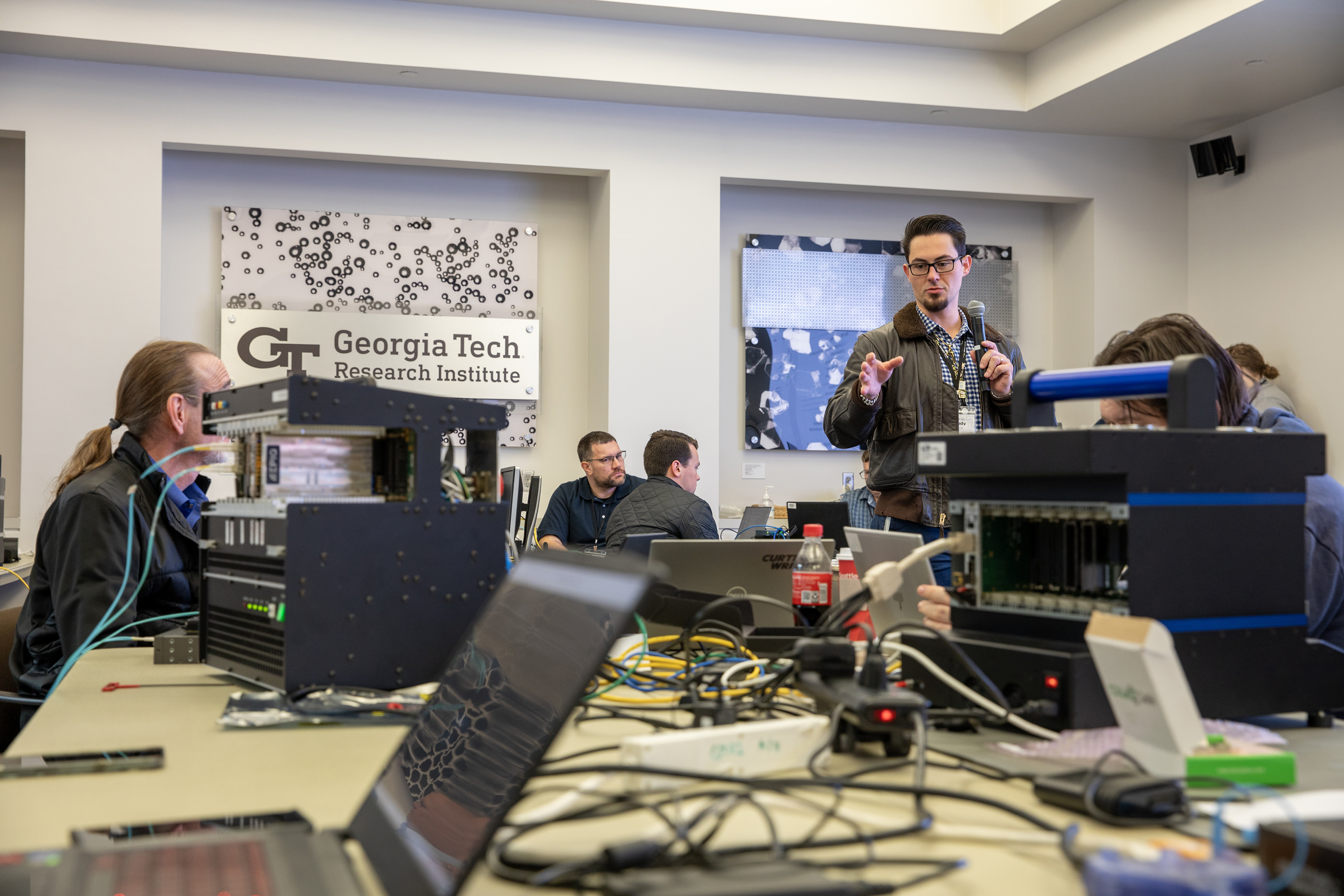
The goal of the government-sponsored PlugFest event is to advance the SOSA™ standard and aligned open architecture standards further, by demonstrating interoperability, validating modularity, and testing real-time integration across platforms.
“The dry run at GTRI for ACC Federal Laboratory/PMA-209 SOSA™ Plugfest exemplified interoperability enabled by open architectures,” said Dr. Ilya Lipkin, Technical Director at ACC Federal Laboratory. “Our ability to develop and field rapidly using open standards is now a reality as demonstrated at the dry run where multiple industry partners were able to connect their distinct solutions and demonstrate a capability that can be fielded rapidly with high assurance. This is truly what the work is all about.”

The goal of the integration test event at GTRI was to demonstrate interoperability ahead of the February 2025 event, which is being orchestrated by the Air Combat Command Federal Laboratory (ACC Fed Lab), Naval Air Systems Command (NAVAIR) PMA-209, and GTRI.
The objectives of PlugFest include:
- Validating interoperability
- Testing basic plug-and-play functionality
- Supporting collaborative troubleshooting
- Refining standards and protocols
The integration event held at GTRI prior to the PlugFest evaluated equipment and components in eight different groups:
- Single-board computers and switches
- Software-defined radios, tuners and positioning, navigation and timing (PNT) systems
- GPUs
- Power supplies
- Chassis management
- Communications and security
- Small form factor systems
- Future Airborne Capability Environment® (FACE®) software applications
In addition to GTRI, the integration event was supported by Leidos, Booz-Allen, and Red Hat.
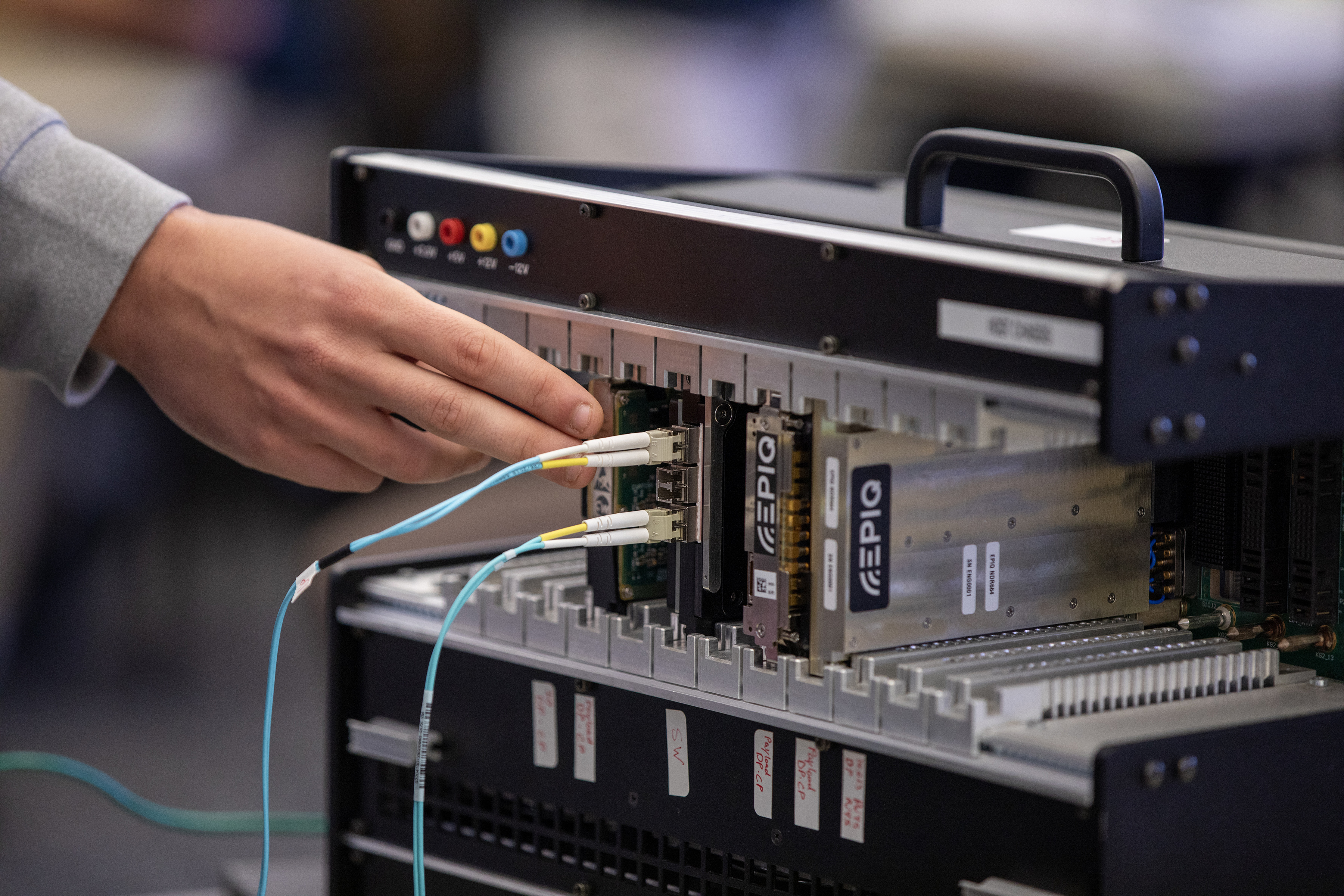
“This event provided an opportunity for vendors to demonstrate the interoperability and modularity of their SOSA™-aligned solutions within different system configurations,” said Cody Cox, a GTRI research engineer and member of the event’s organizing team. “Integration work was conducted to validate the ability to swap one vendor's solution with another seamlessly, ensuring it powered on, integrated with the system, and performed the same functions as the original equipment without extensive modifications.”
The drive for open systems has its basis in federal law and cooperative agreements among the DoD services. DoD equipment has traditionally relied on proprietary technologies and interfaces, meaning equipment made by one vendor may not be compatible with equipment from other vendors. SOSA™ and other open standards are replacing those proprietary solutions with solutions that are based on the modular open systems approach (MOSA). However, implementing open solutions still allows vendors to include special capabilities in the equipment they produce.
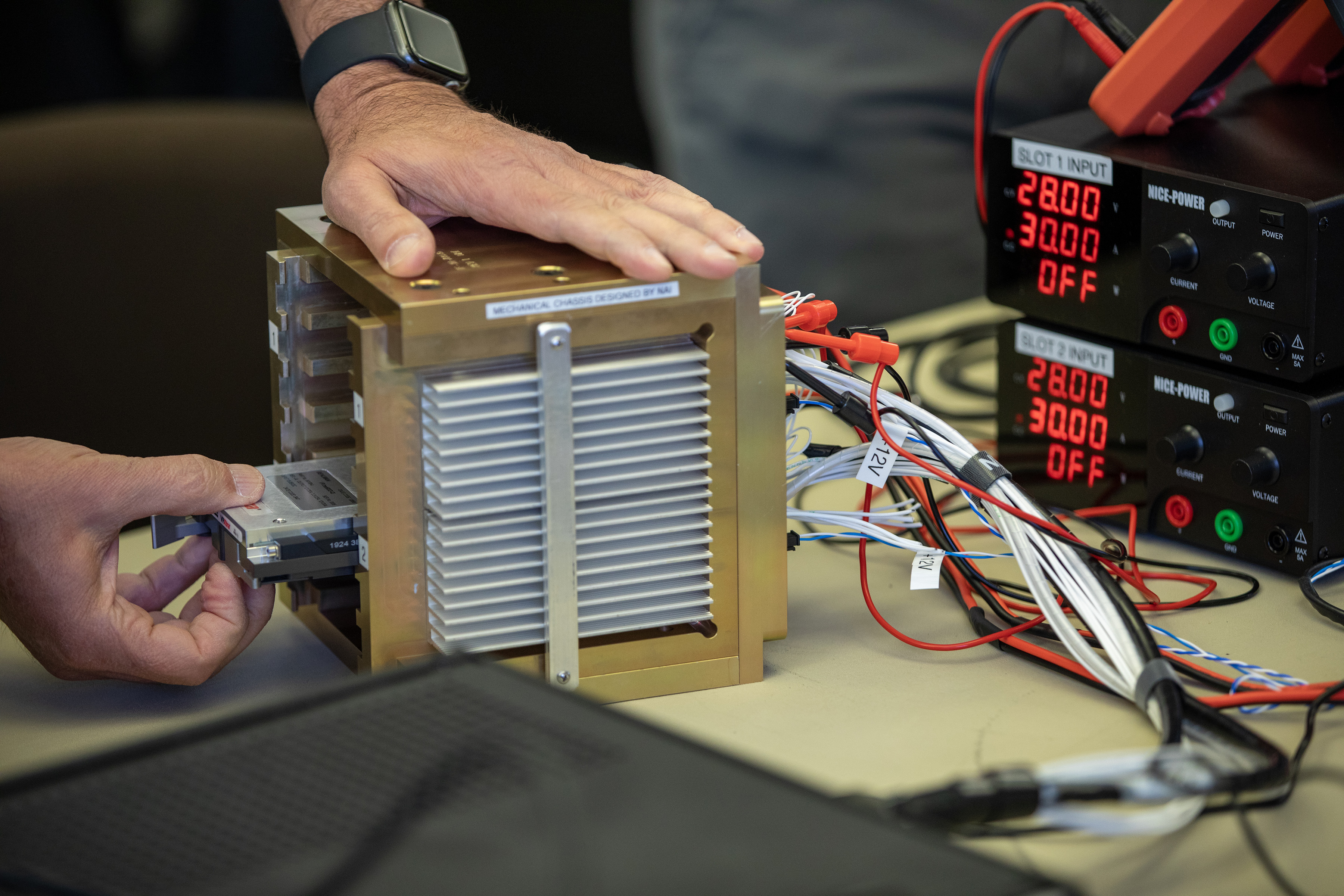
“There is still room for makers to put their proprietary part in the system; this just standardizes more of the components so you can swap things out and buy the same functionality from two different vendors,” explained GTRI Senior Research Engineer Seth King, another member of the integration event team. “That means the DoD services are not limited to a single vendor or the large prime contractor that developed the original proprietary system. Open architecture is the future business model everyone will use.”
He compares the open architecture DoD standard to what has already happened in the personal computer market, where new memory modules, GPUs, and CPUs can be swapped out to enhance the capabilities of a specific computer system.
“This is taking the strategy for the personal computer market into DoD systems,” he said. “If you need more processing power or memory, you’ll be able to buy a card from any vendor and plug it into the aircraft to have more power than you had before.”
GTRI has been involved in promoting open systems standards through participation in working groups and coordinating events like PlugFest, King said.
“The idea of open architecture is something that university-based research centers should very much be involved in,” he added. “We want to help create the standards around which an open architecture marketplace can be built.”
Among the other benefits are that open architectures can expand competition within the marketplace and bring new ideas into play, allowing small vendors to develop innovative equipment such as plug-in cards, he said.
The PlugFest event and surrounding activities will help demonstrate how vendors can apply open standards in ways that will benefit DoD objectives, said Rafael Garcia, another member of the GTRI team.
"While the overall concept of modular open standards is somewhat straightforward, actual implementation is often difficult,” he explained. “Having a PlugFest allows vendors and integrators to showcase these open standards and demonstrate feasibility for acquisition and usage on a variety of systems. GTRI has vast experience in DoD electronic systems and current efforts to integrate modular open standards into legacy and future systems. This offers us a unique and important perspective for assisting in the implementation and usage of modular open standards for a suite of DoD applications."
Organizations participating in the event at GTRI included:
- AEGIS power system
- AirBorn Inc.
- Annapolis Micro Systems
- Behlman Electronics
- Collins Aerospace
- Concurrent Technologies
- Curtiss-Wright Defense Solutions
- EIZO rugged solutions
- Elma Electronic Inc.
- Epiq Solutions
- GE Aerospace
- Georgia Tech Research Institute
- Herrick Technologies Laboratories
- LCR Embedded Systems
- Leidos
- Northrop Grumman Mission Systems
- OAR Corp
- Pixus USA
- Red Hat
- RTI
- TES-I
- VICOR
- WOLF
Writer: John Toon (john.toon@gtri.gatech.edu)
GTRI Communications
Georgia Tech Research Institute
Atlanta, Georgia USA
The Georgia Tech Research Institute (GTRI) is the nonprofit, applied research division of the Georgia Institute of Technology (Georgia Tech). Founded in 1934 as the Engineering Experiment Station, GTRI has grown to more than 2,900 employees, supporting eight laboratories in over 20 locations around the country and performing more than $869 million of problem-solving research annually for government and industry. GTRI's renowned researchers combine science, engineering, economics, policy, and technical expertise to solve complex problems for the U.S. federal government, state, and industry.


